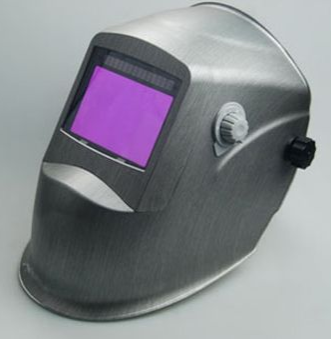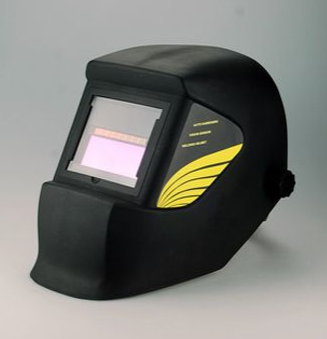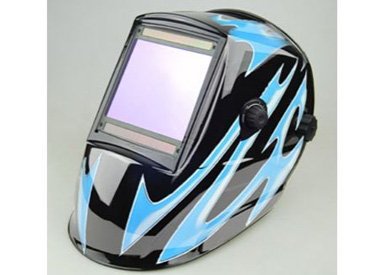Auto-darkening welding helmets are essential safety equipment for welders, providing protection from the intense light, sparks, and harmful radiation produced during welding processes. These helmets are designed to automatically adjust their shading level to protect the welder's eyes while allowing for clear visibility of the workpiece.
However, like any piece of equipment, auto-darkening welding helmets have a limited lifespan. In this article, we will explore how long auto-darkening welding helmets typically last, factors affecting their lifespan, and tips for extending their durability.
Understanding Auto-Darkening Welding Helmets
Before delving into their lifespan, it's essential to understand the components and functionality of auto-darkening welding helmets. These helmets consist of several key elements:

Auto Darkening Welding Helmet
Liquid Crystal Display (LCD): The heart of the auto-darkening technology, the LCD, can change its opacity (shading level) rapidly in response to the intensity of the welding arc.
Sensors: These sensors are typically placed on the helmet's outer shell, facing the welding arc. They detect the arc's brightness and trigger the LCD to adjust the shading level accordingly.
Battery or Solar Panel: Auto-darkening helmets are powered by either batteries, solar panels, or a combination of both. The power source provides energy to operate the LCD and sensors.
Controls: Helmets often come with adjustable settings to control factors like sensitivity and delay, allowing welders to fine-tune their helmet's performance.
Factors Affecting the Lifespan
The lifespan of an auto-darkening welding helmet can vary significantly depending on several factors:

Auto Darkening Welding Helmet
Quality and Brand: The quality of the helmet and the reputation of the brand play a significant role in its lifespan. High-quality helmets from reputable manufacturers tend to last longer and offer better performance.
Usage Frequency: The more frequently a welding helmet is used, the shorter its lifespan is likely to be. Heavy daily use can wear out the helmet's components faster.
Environmental Conditions: The welding environment can be harsh, with exposure to extreme temperatures, sparks, and debris. Helmets used in demanding environments may have a shorter lifespan due to accelerated wear and tear.
Battery Life: If the helmet relies on batteries, the quality and capacity of these batteries can affect how long the helmet remains operational.

Welding Helmet
High-capacity, long-lasting batteries will extend the helmet's lifespan.
Maintenance: Regular maintenance and care can significantly impact the helmet's longevity. Cleaning the lens, replacing batteries promptly, and inspecting for damage are essential maintenance practices.
Typical Lifespan of Auto-Darkening Welding Helmets
Auto-darkening welding helmets are an investment in safety and productivity, so understanding their typical lifespan is crucial. On average, a well-maintained auto-darkening welding helmet can last anywhere from 3 to 10 years. However, this estimate can vary widely based on the factors mentioned earlier.
Here's a breakdown of the typical lifespan based on usage patterns:
Occasional Use (Hobbyists): Welders who use their helmets occasionally for personal projects may find that their helmets last on the longer end of the spectrum, potentially up to 10 years or more with proper care.
Regular Use (Professionals): Professional welders who use their helmets daily or several times a week can expect a lifespan of 3 to 5 years on average. Frequent use and exposure to harsh conditions may lead to more rapid wear and tear.
Heavy-Duty Use (Industrial): In industrial settings where welding helmets are in constant use, their lifespan may be closer to 2 to 3 years. High-frequency usage and demanding environments can take a toll on the helmet's components.
Tips for Extending the Lifespan
To maximize the lifespan of your auto-darkening welding helmet and ensure optimal performance, consider the following tips:
Regular Maintenance: Clean the helmet's lens and sensors regularly to prevent the accumulation of dust, debris, or spatter. Use a soft, lint-free cloth and mild cleaning solutions as recommended by the manufacturer.
Inspect for Damage: Regularly inspect the helmet for signs of wear, such as cracked lens covers, loose components, or damaged sensors. Address any issues promptly to prevent further damage.
Protect the Helmet: When not in use, store the helmet in a cool, dry place away from direct sunlight, extreme temperatures, and moisture. Proper storage can prevent damage to the LCD and other sensitive components.
Replace Batteries: If your helmet uses batteries, replace them as needed to ensure consistent power. High-quality, long-lasting batteries are a worthwhile investment.
Follow Manufacturer's Recommendations: Adhere to the manufacturer's guidelines for sensitivity and delay settings, as well as recommended maintenance practices. These recommendations are designed to optimize the helmet's performance and lifespan.
Invest in Quality: When purchasing a new welding helmet, opt for a high-quality model from a reputable manufacturer. While it may have a higher upfront cost, it is likely to offer better durability and a longer lifespan.








